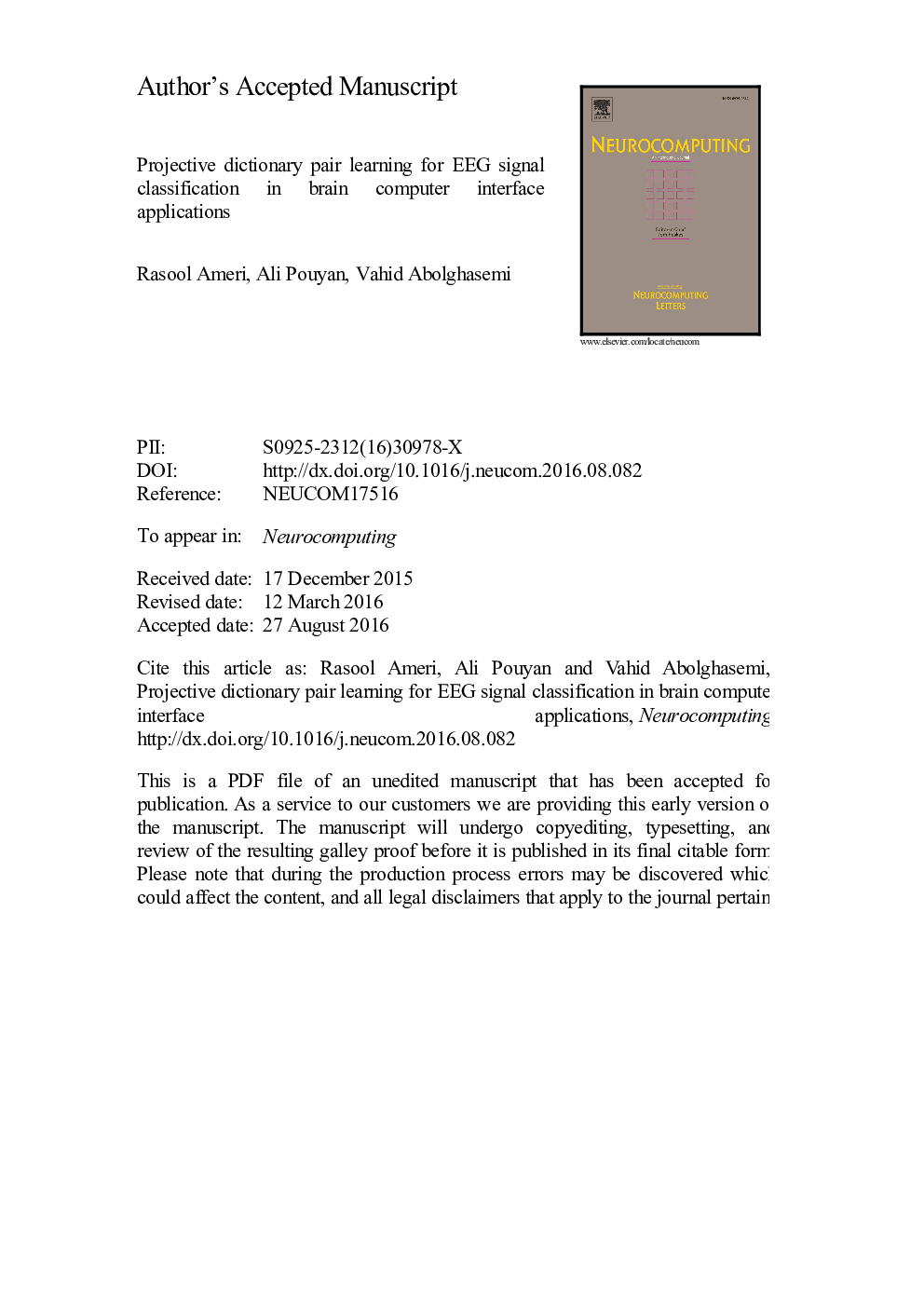| Article ID | Journal | Published Year | Pages | File Type |
|---|---|---|---|---|
| 4948171 | Neurocomputing | 2016 | 20 Pages |
Abstract
Electroencephalogram (EEG) based brain-computer interface (BCI) is a useful communication tool between human brain and external devices. Accurate and effective EEG classification plays an important role in performance of BCI applications. In this paper, we propose a dictionary pair learning (DPL) method for EEG signal classification. In this method, we can learn a dictionary without costly L0 and L1 calculation and sparse coefficients have been calculated by linear projection instead of nonlinear sparse coding. We analyzed the performance of new method using EEG data from IIIa and IVa databases of BCI competition III. Experimental results showed that proposed method provides higher classification performance compared with other dictionary learning methods such as label consistent K Singular value decomposition (LC-KSVD). Based on our results, accuracy rates are as follows: 81.25%, 100%, 60.2%, 83.04% and 79.37% for subjects “aa”, “al”, “av”, “aw” and “ay”, respectively from IVa database. Also, the average accuracy rate of 85.7% has been achieved for two-class classification of IIIa database.
Related Topics
Physical Sciences and Engineering
Computer Science
Artificial Intelligence
Authors
Rasool Ameri, Ali Pouyan, Vahid Abolghasemi,
